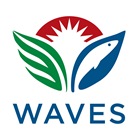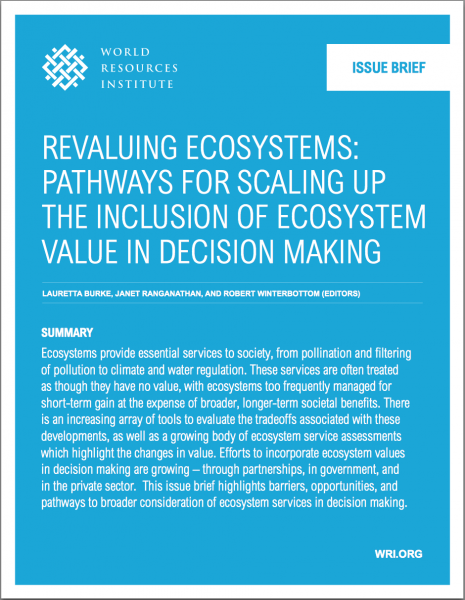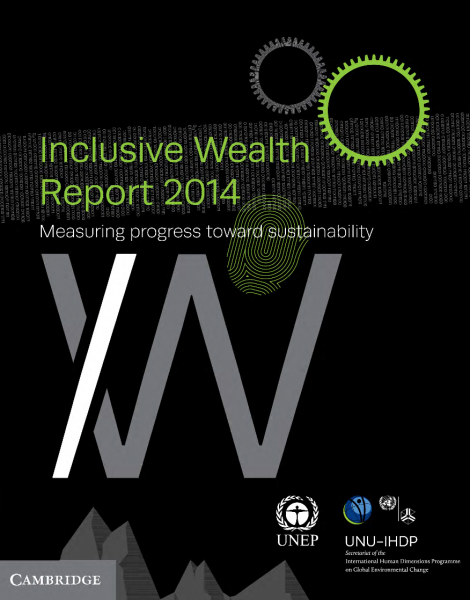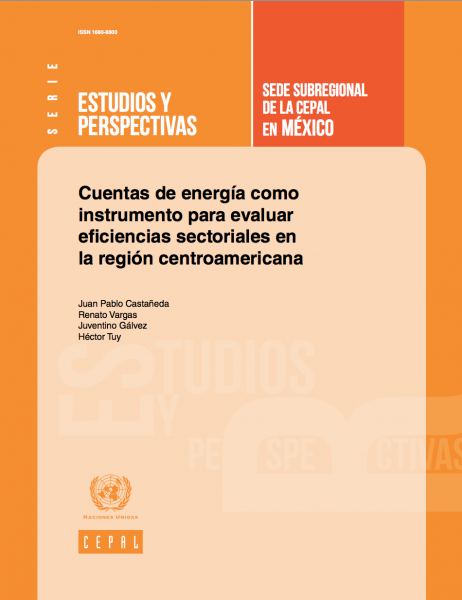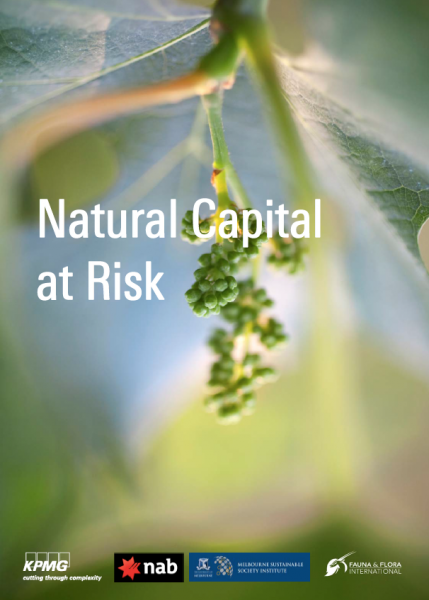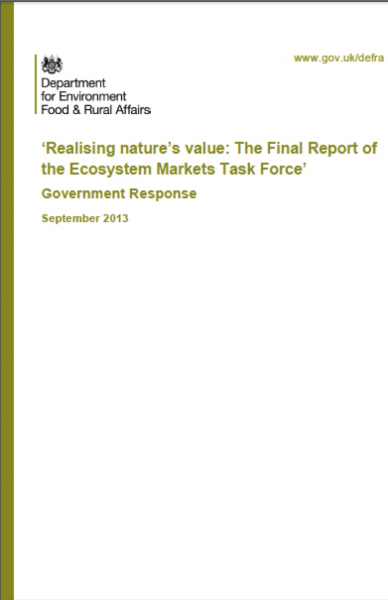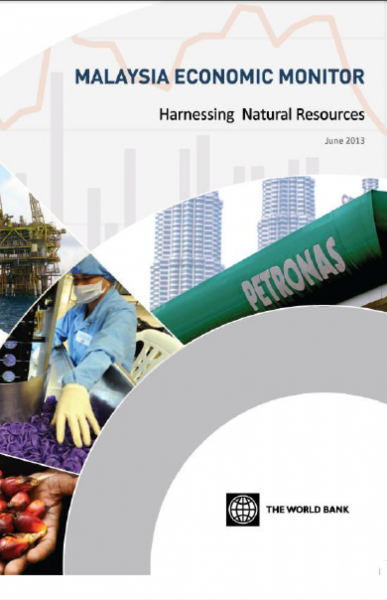World Resources Institute | 2015
Revaluing Ecosystems: Pathways for Scaling Up the Inclusion of Ecosystem Value in Decision Making
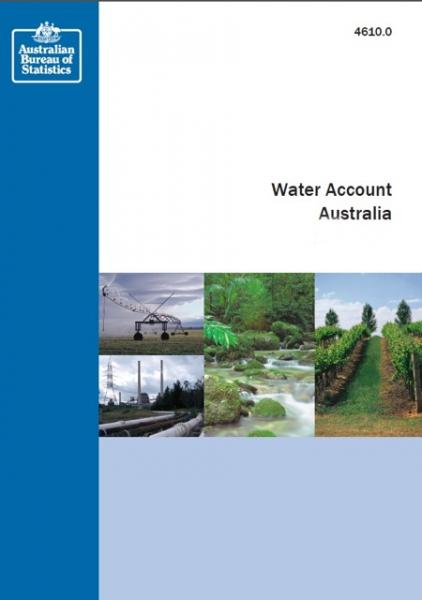
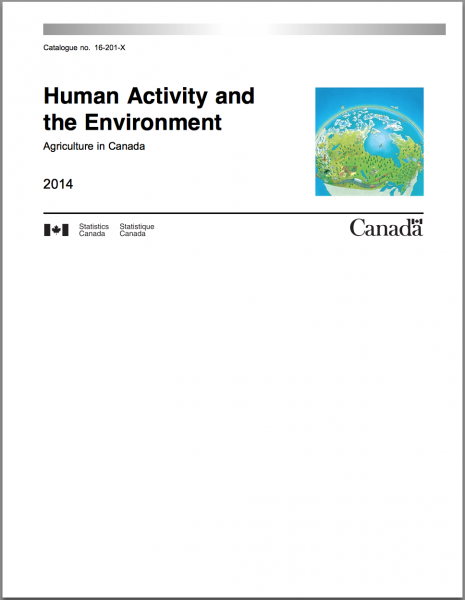
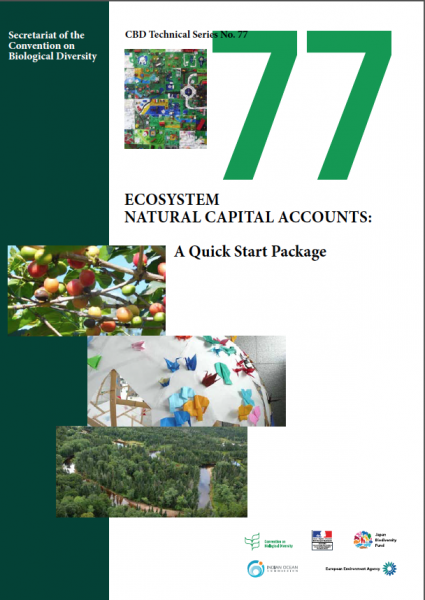
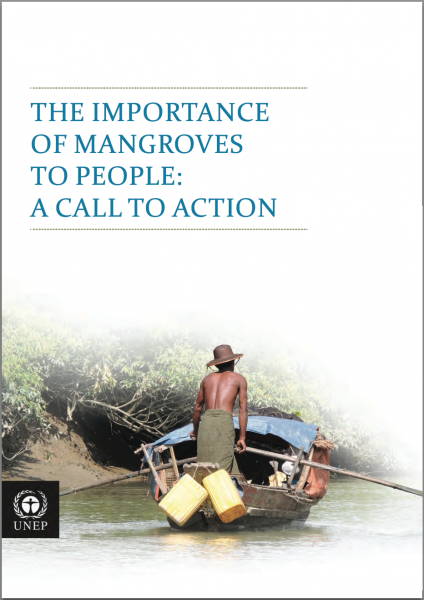
In November 2013, WRI and the Rockefeller Foundation—in collaboration with Forum for the Future and the Economist Intelligence Unit—convened a meeting in Bellagio, Italy on “The Future of Revaluing Ecosystems.” The meeting brought together 32 participants from the public, private, nonprofit and research sectors to consider how society can better incorporate the full range of benefits that ecosystems provide in public and private decisions. This issue brief summarizes six of the critical ideas discussed, including mainstreaming ecosystem values in national economic accounts; building capacity for more pragmatic ecosystem assessments; highlighting the benefits of investing in natural infrastructure; investing in ecosystems to reduce risk in the food and beverage sector; using financial tools similar to green bonds to restore ecosystems in agricultural landscapes; and using knowledge and communication tools to promote more resilient communities, particularly after disasters. View More.
United Nations Environment Programme (UNEP) | 2015
Guidance Manual on Valuation and Accounting of Ecosystem Services for Small Island Developing States
This manual was launched by UNEP at a ceremony celebrating the end of the International Year of SIDS. It is seen as a timely and critical tool to enable policymakers to calculate the true value of ecosystems for a transition to a green economy across the world's 52 small island developing states (SIDS). It highlights the strong interdependency between the natural environment and the economy of SIDS and the importance of accounting for the contribution of ecosystem services to human well-being in order to be able to quantify and manage those benefits. View More.
Ministry of the Environment, Finland | 2015
Towards A Sustainable and Genuinely Green Economy. The value and social significance of ecosystem services in Finland (TEEB for Finland)
The final report of the project ‘National Assessment of the Economics of Ecosystem Services in Finland’ (TEEB for Finland) recognizes that the financial significance of biodiversity and ecosystem services is important for preventing or slowing down the loss of biodiversity in Finland. The results of the TEEB for Finland project help decision-makers to recognize and assess the benefits provided by natural ecosystems, assess their state and trends, and promote the sustainable use of ecosystem services. View More
UNEP/UNU-IHDP | 2014
The primary objective of the 2014 Inclusive Wealth Report (IWR 2014) is to provide quantitative information and analysis on long-term trends in global inclusive wealth (IW), and in doing so paint a picture of how nations are performing in their efforts to sustainably improve the well-being of their citizens. Another objective of the report is to further drive global efforts toward improving conceptual understanding – and quantitative evaluation – of the components of inclusive wealth that remain all-too poorly understood: natural capital and human capital. View More
Economic Commission for Latin America and the Caribbean (ECLAC) | 2014
In Central America, Guatemala has pioneered the development and use of energy accounts, which provide a detailed description of energy use by the various economic activities. The experience in constructing and using the energy accounts has been very instructive for the country and suggests the great potential they have as a tool for monitoring energy efficiency nationally and regionally. This publication includes a discussion of the possibilities of implementing and using energy accounts in developing countries as a complement to traditional energy balances and statistics, and is particularly applicable in Central American countries. It includes lessons learned from the implementation process by key stakeholders. (Available only in Spanish) View More

Australian Bureau of Statistics (ABS) | 2014
The latest water account for Australia shows the largest use of water measured since the start of the series peaking at 20 billion liters. As in previous years the agriculture industry was the largest consumer of water, but this year their use was up considerably to just under 13 billion liters. Dating to 1993, the series is one of the longest running environmental accounts in the world. View More

Statistics Canada | 2014
his publication from Statistics Canada presents Canadian Agriculture from the perspective of ecosystem goods and services. It shows agricultural ecosystems supported the production of more than 134 million tons of farm output in 2012, valued at $54.2 billion. Other highlights: natural and semi-natural areas on farms supply many ecosystem services including habitat provision, water regulation and scenery; in 2011, woodlands and wetlands accounted for 8% of farm area, and natural pasture accounted for a further 23%; and 3,272 farms in Canada reported owning honeybees not only for honey production but also to improve pollination. View More

Convention on Biological Diversity | 2014
Ecosystem Natural Capital Accounts: A Quick Start Package is meant to provide the additional elements needed by countries willing to start implementing ecosystem accounts right away, thus the title a “quick start” package. It includes a structured set of accounting tables and guidance based on practical experiences of compiling ecosystem accounts. It is a comprehensive approach applicable to all ecosystems, whether natural or modified by anthropogenic activities, with the purposes of measuring the capability of delivering their services now or in the future, directly to people or as inputs to the production of commodities. View More
Fauna & Flora International, NAB, KPMG, Melbourne Sustainable Society Institute | 2014
This paper is intended to help Australian businesses better understand their dependency onnatural capital and underpin a more sustainable economy and healthy environment via fostering a greater understanding of Australian businesses' dependency on natural capital, and by encouraging and facilitating discussion within the business community about where they are most likely to be exposed to risks related to natural capital. View More

UNEP | 2014
Mangroves are being destroyed at a rate 3-5 times greater than the average rates of forest loss, costing billions in economic damages and denying millions of people the ecosystem services they need to survive, according to this report by the United Nations Environment Programme (UNEP). The Importance of Mangroves: A Call to Action, launched September 29, 2014 at the 16th Global Meeting of the Regional Seas Conventions and Action Plans, describes how emissions resulting from mangrove losses make up nearly one-fifth of global emissions from deforestation, resulting in economic damages of some US$6-42 billion annually. Mangroves are also threatened by climate change, which could result in the loss of a further 10-15 percent of mangroves by 2100. View More
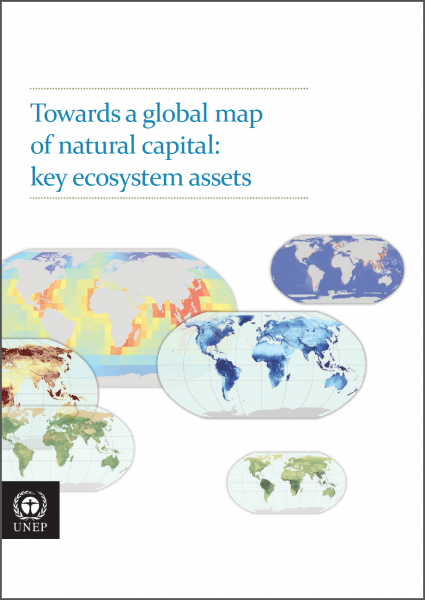
UNEP | 2014
There is a considerable body of work in the fields of natural capital accounting and the related area of mapping of ecosystem services. This pilot project builds on these foundations to develop the first global map of the ecosystem stocks of natural capital. The map combines layers of key ecosystem assets into a composite map covering both terrestrial and marine ecosystems. The report also provides an overview of relevant policy drivers and activities of key actors, and next steps for developing the mapping of natural capital. View More
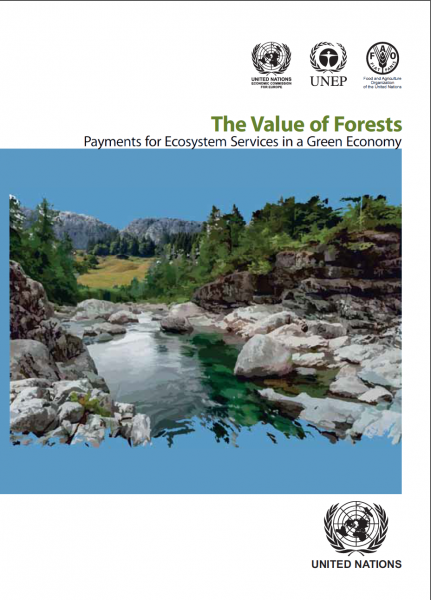
United Nations | 2014
This publication is a joint effort of UNEP, UNECE and FAO, and discusses the concept of Payment for Ecosystem Services, the various approaches, applications and resulting benefits for Europe. It also covers some negatives that could occur without good policy in place. It uses lessons learned to provide guidance on what is needed for the success of PES schemes and their possible future. View More
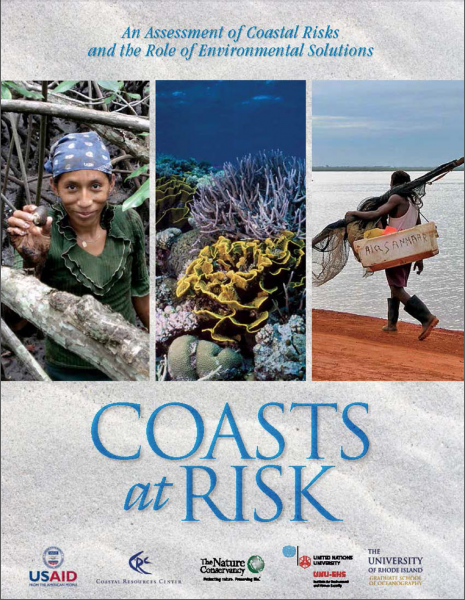
The Nature Conservancy | 2014
The report finds a significant link between environmental degradation and disaster vulnerability, meaning not just a community’s risk of being hit, but the ability to resist and recover from natural disasters. Globally, 23% of the population lives within 100 km of a coast, and that is predicted to increase to 50% by 2030. Governments and aid agencies can’t change storm paths or block tsunamis. But there are many ways to reduce the social and financial impacts of those hazards. This report makes clear that attention to natural capital — improving coral reefs and mangroves that buffer shores and improving fisheries to enhance food security — could also go a long way toward reducing the human cost of coastal hazards. View More
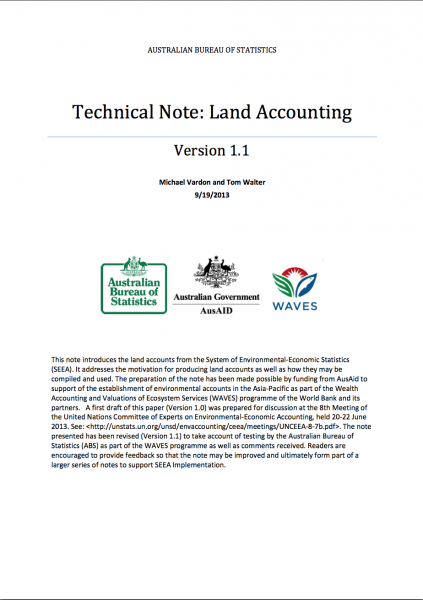
Australian Bureau of Statistics / AusAID /WAVES | 2014 | Technical Note
This note provides an introduction to land accounting, covering the motivation for producing them as well as their development, compilation and use. Land is a unique environmental asset that delineates the space in which economic activities and environmental processes take place, and within which environmental assets and economic assets are located. The SEEA land accounts’ scope is the total area of a country, including areas covered by inland water resources, such as rivers and lakes and, in certain applications, may also be extended to include areas of coastal water and a country’s Exclusive Economic Zone (EEZ). View More

Australian Bureau of Statistics | 2014 | Report
This publication represents the first issue of Australian Environmental-Economic Accounts (AEEA). It brings all ABS environmental accounts together in one place to deliver a broad and cohesive picture of the environmental stocks and flows of relevance to the Australian economy and society. AEEA responds to the growing demand for integrated environmental-economic information and reflects an emerging maturity within the Australian Bureau of Statistics (ABS) environmental program. View More »

World Resources Institute | 2014 | Report
This guidebook details the steps in conducting a coastal ecosystem valuation to inform decision making in the Caribbean. It guides valuation practitioners—both economists and non-economists—through the three phases of a valuation effort (scoping, analysis and outreach), with an emphasis on stakeholder engagement in all phases.View More »

UNEP's International Resource Panel | 2014 | Report
This latest report from the International Resource Panel on the current status and future potential of REDD+, describes the many benefits of forests and other ecosystems as a way of demonstrating that forests have multiple values beyond carbon sequestration and indeed are a foundation for sustainable societies. The report provides a summary of the elements necessary for integrating REDD+ into a Green Economy, providing policymakers with innovative ideas for supporting economic development while maintaining or increasing forest cover.View More »

UK's Natural Capital Committee | 2014 | Report
The second State of Natural Capital Report, published by the UK’s Natural Capital Committee, says that too often the environment is taken for granted, and called for a 25-year-long natural capital plan so that Britain can enjoy the “economic and well being benefits”. It highlights natural capital as an important player in the UK’s economy and society and calls for the government to invest in it. Chair of the committee, The economist, Dieter Helm, wrote in the report, “Integrating the environment into the economy is hampered by the almost complete absence of proper accounting for natural assets.” View More »

SEEA | 2014 | Report
The System of Environmental-Economic Accounting 2012—SEEA Central Framework (SEEA Central Framework), which was adopted asan international standard by the United Nations Statistical Commission at its forty-third session in March 20121 is the first international statistical standard for environmental-economic accounting. The SEEA Central Framework is a multipurpose conceptual framework for understanding the interactions between the economy and the environment, and for describing stocks and changes in stocks of environmental assets. It puts statistics on the environment andits relationship to the economy at the core of official statistics. View More »

TEEB | 2014 | Report
While there is considerable experience with accounting for water quantity, there is less information on accounting for water quality and the contribution of ecosystems and biodiversity in its provision. This brief, inspired by the growing global focus on natural capital accounting, identifies the ongoing challenges related to the development of natural capital accounting and water quality accounting in order to encourage debate and commitment towards effective water and biodiversity policy. View More »

US National Academy of Sciences | 2014 | Report
This report shows that in the Gulf of California fisheries landings are positively related to the local abundance of mangroves. Mangroves are disappearing rapidly worldwide despite their well-documented biodiversity and the ecosystem services they provide. Failure to link ecological processes and their societal benefits threaten mangroves and result in costly "externalities," and the potentiallyirreparable damage to fisheries because of mangrove loss has been greatly underestimated. View More »

IISD | 2013 | Policy Brief
This policy brief discusses the critical importance of shifting the focus of economic measurement from GDP alone to a broader measure based on the concept of inclusive wealth. Author Robert Smith, former Director, Environmental Accounts and Statistics Division, Statistics Canada, identifies this as the sum of produced and financial assets along with the value of natural, human and social capital. The notion behind inclusive wealth is that every nation has a portfolio of five asset classes at its disposal, and governments play a key role in ensuring that the value of this portfolio is growing over time. He argues that IISD has a pivotal role to play in advancing this concept as of the underpinnings of the United Nation’s new Sustainable Development Goals, which will help steer the global development agenda from 2015 forward. View More »

McKinsey Global Institute | 2013 | Report
Rising resource prices and expanded production have raised the number of countries where the resource sector represents a major share of the economy from 58 in 1995 to 81 in 2011. That number will continue to rise to meet soaring demand for resources and replace rapidly depleting supply. Economies with natural-resource endowments have a huge opportunity to transform their prospects. To capture that investment, this report says that economies should reframe their economic strategies around three key imperatives: effectively developing their resource sector, capturing value from it, and transforming that value into long-term prosperity. View More »

UN | 2013 | Report
Highlighting the benefits derived from Europe's forests - such as clean air, fresh water, food, medicine and shelter - this report, compiled by three UN agencies (United Nations Environment Programme (UNEP), United Nations Economic Commission for Europe (UNECE) and the Food and Agriculture Organization (FAO)), examines how paying foresters for these benefits can promote rural development and ensure that rural populations maintain their incomes and livelihoods. View More »

Statistics Canada | 2013 | Report
Between 2000 and 2011,an area almost twice the size of the cities of Toronto, Montréal and Calgary combined was converted from agricultural and natural land to settled areas. These types of changes in land cover can influence the capacity of ecosystems to provide or contribute to the production of ecosystem goods and services (EGS). EGS are goods (i.e. fish and timber) and services (i.e. air and water purification) that provide benefits to people. This study is based on the 2013 report Human Activity and the Environment 2013: Measuring ecosystem goods and services in Canada, which presents information on the quantity, quality and value of Canada’s ecosystems and EGS. The report presents preliminary results achieved through a two-year interdepartmental project to develop experimental ecosystem accounts and the required statistical infrastructure. View More »

Norwegian Ministry of Environment | 2013 | Report
The summary and conclusions of an expert Commission appointed by the Norwegian Government to assess and study the value of ecosystem services. The Commission was asked, among other things, to describe the consequences for society of the degradation of ecosystem services, to identify how relevant knowledge can best be communicated to decision makers, and to make recommendations about how greater consideration can be given to ecosystem services in private and public decision making. View More »

The UK’s NaturalCapital Committee’s first State of Natural Capital Report sets out a framework to help natural capital be hardwired into economic decision making in the UK. It highlights the work the Committee, an independent advisory body to the Government, will undertake to better understand how the state of the natural environment affects economic performance and wellbeing and provides advice on how to manage the country's natural wealth in an efficient and sustainable way. View More »

Tourism can play an enormous role in development in Africa if the continent's natural assets are integrated into each country's economy and government structure and be seen as a benefit by everyone, from the president, to the ministers to the general population, says this World Bank report. View More »

This first report for decision makers by ELD details why land is chronically undervalued and how the practice of emphasizing short-term economic gains leads to intensive, unsustainable resource extraction, and ultimately to land degradation. Focusing solely on agricultural or forestry values ignores the many other valuable contributions of land uses and services to society such as carbon sequestration, recreational values, or nutrient cycling. View More »
The United Kingdom's Office of National Statistics have published the following reports on measuring natural capital. The reports include: Towards Wealth Accouting: Natural Capital Within Comprehensive Wealth, Measuring UK Woodlands Area and Timber Resources, Development of Water Statistics and Water Accounts in the UK (all pdfs). View More »
The GLOBE Natural Capital Legislation Study introduces natural capital as the basis for all economic activity. It summarizes the benefits and methods of valuing natural assets in their crucial role of providing natural resource inputs and environmental services for economic production. The study reviews international efforts towards valuing ecosystem services, followed by an account of the measures taken by eight countries towards natural capital accounting. View More »
Biodiversity, a property of natural areas, provides a range of benefits to the economy including bioprospecting rents, knowledge and insurance, ecotourism fees, and ecosystem services. Many of these values can be broken out in the System of National Accounts, leading to better estimates of the economic losses when natural areas are degraded or destroyed. View More »
The study, "Natural Capital at Risk: The Top 100 Externalities of Business” was commissioned by the TEEB for Business Coalition to identify the world’s largest natural capital risks and opportunities for business and their investors. The report, authored by Trucost, quantifies environmental externalities such as damages from climate change, pollution, land conversion and depletion of natural resources, across business sectors and at a regional level. View More »
Since income is the return on wealth, the total wealth of any given country should be on the order of 20 times its gross domestic product. Instead the average observed ratio from the balance sheet accounts of the System of National Accounts is a factor of 2.6 to 6.6, depending on whether natural resource stocks are included in the balance sheet. The clear implication is that the System of National Accounts wealth accounts are incomplete, with the most obvious omission being human capital. Estimating the value of human capital using the lifetime income approach for a sample of 13 (mostly high-income) countries yields a mean share of human capital in total wealth of 62 percent -- four times the value of produced capital and 15 times the value of natural capital. But for selected high-income countries in the sample there is still an average of 25 percent of total wealth that is unaccounted - it is neither produced, nor natural, nor human capital. This residual intangible wealth is arguably the "stock equivalent" of total factor productivity - the value of assets such as institutional quality and social capital that augment the capacity of produced, natural and human capital to support a stream of consumption into the future. View More »
This paper responds to the growing demand for integrated environmental–economic information and reflects an emerging maturity within the Australian Bureau of Statistics (ABS) environmental statistics program. This release uses a theme based presentation to showcase the range of ABS environmental accounts which include: Water Account, Australia; Energy Account, Australia; Waste Account, Australia (Experimental Estimates); and others. It also demonstrates the power of these accounts in supporting informed decision making on contemporary environmental issues. View More »
Thirty-five companies now mention ecosystem services in publicly available materials: It is clear that corporate engagement with the issues is on the rise. Business efforts to-date cover a wide spectrum. Some companies have crafted corporate policies of no net, or net positive, impact on ecosystems or ecosystem services. Other firms are exploring the issue and pilot testing analytical tools. Others simply state that they recognize the importance of ecosystem services. Given this wide range of activity, as well as the increasing number of companies that are engaging, it is timely to assess the current state of play on corporate ecosystem services initiatives. This report offers the first opportunity to review corporate engagement with ecosystem services around the world. View More »
The Ecosystem Markets Task Force is a practical, business led review of the business opportunities that arise from valuing nature correctly. The British government asked the Task Force to review the opportunities for UK business from expanding green goods, services, products, investment vehicles and markets which value and protect our natural environment. View More » (pdf)

The Ramsar Secretariat, in partnership with the Institute for European Environmental Policy (IEEP), International Union for the Conservation of Nature (IUCN) Wetlands International, The Convention on Biological Diversity, (CBD), the Helmholtz Centre for Environental Research (UFZ) and the UNEP TEEB Office, have produced a report that builds on the TEEB approach to generate a better understanding of the ecosystem service values of water and wetlands and encourage improved decision making and business commitment for their conservation, investment and wise use. The primary objective of the report is to help identify major gaps and inconsistencies in current knowledge of the economics of water and wetlands, so as to inform agenda-setting for further work on the economics of water and wetlands. View More »

BSR has developed this report to assist businesspeople who are asking questions about ecosystem services. It is intended to help corporate decision-makers understand and assess the current state of play within the ecosystem services tool landscape. The report offers a unique view of the full suite of current tools, highlights opportunities and challenges for their use in the private sector, and lays out ways forward for piloting, verifying, and validating ecosystem services tools. View More »

This report, published by the Office for National Statistics of the UK's Statistics Authority, is a road map for the development of natural capital accounts within the United Kingdom's Environmental Accounts. Download » (pdf)

This publication from the Australian Bureau of Statistics (ABS) examines a number of complex issues facing policy makers in Australia, such as climate change and natural resource management, and illustrates how environmental accounts can be used to further improve the decision-making process. View More »

The Little Green Data Book is annual compilation of environmental data for more than 200 countries, providing up-to-date information on agriculture, forests and biodiversity, energy and emissions, water and sanitation, environment and health and oceans. The book includes an Adjusted Net Savings indicator—also known as “genuine savings”—which calculates the true rate of savings in an economy after taking into account investments in human capital, depletion of natural resources and damage caused by pollution. View More »

This briefing note was prepared by the United Nations Statistics Division with the aim to introduce the System of Environmental-Economic Accounts (SEEA) to a broad audience. In particular, it describes how the SEEA can support sustainable development and green economy policies. View More »

Using a wide range of information, this framework provides a structure to compare and contrast source data and allows the development of aggregates, indicators, and trends across a broad sprectrum of environmental and economic issues. View More » (pdf)

In this report, Statistics Netherlands gives an overview of green growth in the Netherlands. It presents the available data for twenty of the thirty indicators proposed by the Organisation for Economic Co-operation and Development (OECD), and may serve as a benchmark, as well as a starting point for further discussion. The main conclusion of the report is that the environmental efficiency of production in the
Netherlands has improved. View More »
Netherlands has improved. View More »

Published in 2011, the World Bank book says countries that manage their natural wealth for the long-term move up the development ladder. Close to one third of the wealth of low-income countries comes from their “natural capital” which includes forests, protected areas, agricultural lands, energy and minerals. View More »

This dataset presents a set of "wealth accounts" for over 150 countries for 1995, 2000, and 2005, allowing a longer-term assessment of global, regional, and country performance in building wealth. View More »

This annual progress report, published in October 2011, covers the contineous impact that PEI country programmes have had over the past several years and the progress made in expanding, operationalising and implementing the UNDP-UNEP Poverty-Environment Initiative. View More »

The Environmental Accounts of the Netherlands by Statistics Netherlands (CBS) present a broad quantitative overview of important economic-environmental developments. The environmental accounts provide a systematic description of the relationship between the environment and the economy and can be used for in depth analyses of various types. View More » (pdf)

In The Economics of Ecosystems and Biodiversity’s (TEEB) synthesis report, there are three scenarios: a natural ecosystem (forests), a human settlement (city), and a business sector (mining), to illustrate how the economic concepts and tools described in TEEB can help equip society with the means to incorporate the values of nature into decision-making at all levels. View More »

This book describes estimates of wealth and its components for nearly 120 countries. The book has four sections. The first part introduces the wealth estimates and highlights the level and composition of wealth across countries. The second part analyzes changes in wealth and their implications for economic policy. The third part deepens the analysis by considering the importance of human and institutional capital, and by linking wealth to production. The fourth part reviews existing applications of resource and environmental accounting in developed and developing countries. View More »
